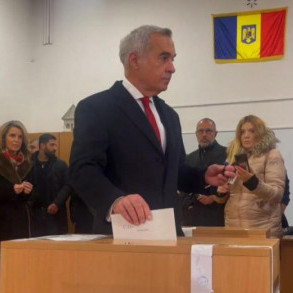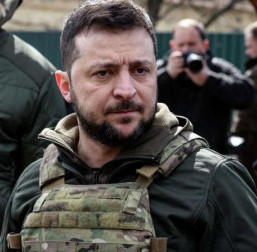This fact entitles some experts to say that any occupation is out of the question. Whatever the matter in dispute among historians, but for Estonia’s present authority 6 August is a “black-letter” day. Once again, it makes sense to understand this complicated historical issue and to try to dot all the “i”s without strain and timeserving.
History without Myths
The forcible annexation, about which Estonian politicians are shouting in all corners means an elimination of public institutions. However, Estonia joined the USSR as a full-fledged republic (with the exception of the armed forces and its own currency), which under the Constitution of the Soviet state could withdraw membership.
Today Estonia is part of the EU almost on the same conditions under which it was part of the USSR in the Soviet times. In any case, the national currency was replaced by the common European currency. However, this circumstance does not give Estonian nationalists rise to concern.
One can argue furiously to prove “disastrous” consequences of the “occupation” but facts are stubborn things. During Soviet times Estonia became an industrial country. The enterprises, which have been producing competitive products up to this date and making the lion's share of GDP, were built by the Soviet “occupiers”. Agriculture increased many times too. Estonian farmers felt confident about the future. They knew that their products would be demanded, and the Soviet government would not let them die of hunger during lean years. As compared to the Soviet period the agricultural production in Estonia decreased almost 12 times. And now the Estonian peasantry’s future is threatened with real danger.
After joining the Soviet Union, the Republic received a powerful impetus for the development of its own culture. Although the Constitution of the Estonian SSR did not include an item on the need to preserve the national language, in practice, everything was done so that the Estonian people might not lose it. Over forty years of “occupation” a lot of theaters were open in the country where performances were on in the Estonian language. In Estonian universities, including the most famous one in Tartu, more than 50 percent of subjects were taught in Estonian. In some universities this correlation even reached 80 percent.
As a result, the Estonian intellectual elite gained enormous opportunities for proper development. It was during the Soviet Union that writers earned a living by writing books. At present, almost all of them live on translation of foreign authors’ works into Estonian.
Who is to Profit from it?
However, in modern Estonian textbooks the following line is manifest: the bad Russia is guilty of all troubles of the Estonian people. Who is to profit from it after all?
From 1991, immediately after gaining independence by Estonia, Russophobia and hate towards everything Soviet became the state ideology. Estonian authorities used false slogans (and still continue to do so) about the infringement on ethnic self-awareness and the Soviet “occupation” as a cover for real purposes of their anti-Russian policy: with propagation of nationalism it was much easier to rule the country. It is much easier to find a common enemy and join in the struggle than to restore the former economic power and to combat unemployment. The idea was inculcated in the minds of Estonians that they are the chosen people, and all the others, especially Russians, are occupiers, who carried out genocide of the Estonian people.”
Amid the general chaos and decline in the country Estonians believed it. Furthermore, the myth of the occupation aims to cover the ethnic genocide taking place in the republic to turn the Russians into a marginal mass without goals and national leaders that would submissively serve the master race. In the formation of a new state of Estonia in the early 1990's this position was not hidden. Thus, at the constitutional assembly, which formulated the fundamental law of the country, it was openly stated that “we must ensure the rights of Estonians before securing human rights.” Very eloquently.
Ethnic and cultural destruction of the Russian community is also advantageous because in this case Russia will lose a powerful lever to influence the situation in Estonia. With the crisis the situation worsened even further. The authorities are closing Russian schools because of an alleged lack of money. At the same time neighboring Estonian schools with fewer schoolchildren than in Russian ones are let alone. Another important indicator of Russian genocide is the number of unemployed. Among Estonians this figure is 8 percent and among Russians 20. The reason is national discrimination in employment. The situation is gradually becoming strained, and even the Estonian experts do not exclude the possibility of an explosion among the Russians. However, the Estonian authorities are doing their best to alienate the Russian-speaking population. There is not a single Russian party, and the police efforts are aimed at preventing its formation and the Russians consolidation.
For the moment the irony of it is that 6 August is a black-letter day not for the Estonians but for the Russians in Estonia. That day is another reason to blame the Russians and show them their place, their status of “non-citizens”. One has to be blind from unbridled nationalism not to see that the oppression and humiliation of almost a third of the population will sooner or later make themselves felt, but it may be too late.









